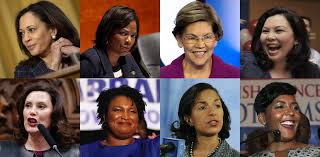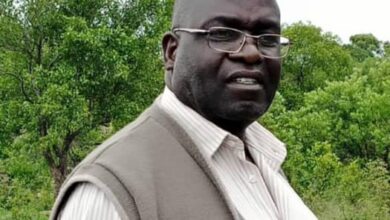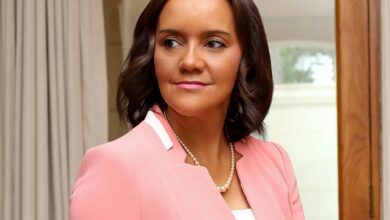
Women, regardless of nationality and their country’s development status, remain severely under-represented in political institutions.
Analysts have said the fundamental reason for women’s under-representation is that they do not run for office.
This is because, analysts say, there is a substantial gender gap in political ambition between men and women, who are likely to be more scrutinised
Despite being a “superpower” the United States (US) is not different with other countries when it comes to female representation in politics.
Women, in spite of their professional accomplishment, are substantially less likely than men to run for political office in the world’s economic development leading nation.
Addressing global journalists partaking in a US virtual reporting tour on Women and Elections, National Fellowship Programme Director with IGNITE National, a nonpartisan organisation that leads a movement of young women to become the next generation of political leaders, Tierra Stewart, attempted to answer why there are less women in office.
“Surveying across the country, one of the biggest factors is just not feeling qualified. Which shifts my mind, because a lot of the men who are in office don’t even have college degrees,” she said.
“Yet, a woman may have a master’s degree, a doctorate degree, and she still will not feel qualified.”
Steward noted that family roles, raising money and facing scrutiny were some of the factors women faced in their political journey.
“We are not recruited as much as men from the time that we’re born. It’s not socialised for us to be a leader. Then just the anticipation of discrimination, and excessive scrutiny of having to navigate those spaces,” she said.
Stewart said in the 2016 US elections, 20 percent of Congress was made up of women while there were only 12 women from the 25 percent of state legislators and only 12 percent women were governors.
“To date there has never been a black woman to serve as a governor of a state. And then 22 percent of mayors were women and this is where we started in 2016. 73 percent of the women were Democrat and then 27 percent were Republican. If you look at the racial representation, 64 percent of the women were white, 16.8 percent black, 9.3 percent was Latina, 8.4 percent Asian American Pacific Islander, and then 0.9 percent multiracial,” she said.
In 2018, the US saw a slight shift in the increase of female representation, which Stewart attributes to various women movements.
“So many things happened after 2016 elections, so many different movements. This I believe was the I Believe Her movement in response to the Me Too movement and representation of the sexual violence, the victims of sexual violence, arising all across the world and just saying that we believe her because for too long in this country, women have had to be silent about their abuse,” said the gender activist.
These movements, said Stewart resulted in a domino effect of women speaking out on their abuse and empowering others.
“November 2018 was titled Year of the Woman due to the record number of women. I think the last Year of the Woman was 1992, and so here we are in 2018 with a record number of 103 women elected to Congress,” she noted.
“In 2018, we went from 20 percent to 23 percent women in Congress. Then from 12 percent to 18 percent in governors, and then it was 25 to about 27, because these elections are happening year-round, it’s really hard to capture, but it’s around 27 or 28 percent legislators currently. And then 22 percent, the same with the mayors, but it’s still around 22 to 23 percent.
“In 2018 compared to 2016, there was 27 percent Republican women in 2016 and that actually went down to 20 percent. We notice less women running as Republican, which is not a good thing because you need equal representation on both sides.”
Stewart argued even though 2018 was tagged as the Year of Woman, so much needs to be still done.
“There are over 520 offices across the US and within that, we would need 140 000 more women serving in elected office to reach gender parity and most of these offices are at the local level. We also need to emphasise the importance of women, not only running at the local level, but also voting at the local level,” she said.
She cited an example of a young woman recently who put a bid in to run for city council of her town who as a full-time worker put in a proposal on how she could maintain her responsibilities at work, as well as running for office.
“Not only did she receive a lot of scrutiny for that, she ended up having to resign from her race. And then the environment was so coerced when she’d been in work that she ended up also resigning from her place of work. So not only did she lose her campaign, she lost her job. And so that’s what I mean about the barriers to try to run for office.”
Professor of Political Science and Director of the Rooney Center for the Study of American Democracy at the University of Notre Dame, Dr Christina Wolbrecht, noted that the 2020 election year was significant in the US including being the centennial of the ratification of the 19th Amendment.
“The 19th Amendment prohibits discrimination in voting rights on the basis of sex. It is patterned after the 15th Amendment to the American Constitution that prohibits the denial of voting rights on the basis of race, colour, or previous condition of servitude,” she said.
She said there has been a lot of interest in women voters throughout the 100 years in which they were nationally enfranchised.
“I want to point out that before 1920, a number of states had given women rights to the vote. But with the 19th Amendment, there’s a requirement of all states to allow women to participate in elections,” said the political scientist.
Dr Wolbrecht said since 1980, women as a group have participated in US elections at a higher rate than men do.
“I might mention that it’s actually been since 1964, that there have been more women in the presidential electorate, even when they were turning out at a slightly lower rate. There are simply more women of voting age in the US due mostly to the fact that women have longer lifespans, at least in the US,” she said.
However, Dr Wolbrecht warned that women were just as diverse in their identities and their interests as men are.
“We see important differences. One of those ways in which women are diverse is racially. This is showing over the last five presidential elections, the turnout among different groups – White, non-Hispanic, African American, Other non-Hispanic, and Hispanic.
“I want to point out is that every racial group, women are more likely to turn out than men. That is a consistent finding. On the other hand, there are, of course, important differences between different groups of women and men. Different racial groups, I should say. What I want to point out, however, is the highest turnout that we see, by dividing up the population this way, is among white women and black women,” she said.
“Black women’s turnout in the US election has become especially high in recent elections. One of the reasons you’re hearing a lot; there are many reasons why you should; about black women voters is their commitment to electoral participation is particularly high.”





